CANNED


CANNED Quick and easy recipes that get the most out of tinned food THEO A. MICHAELS PHOTOGRAPHY BY MOWIE KAY

Dedicated to my beautiful wife Anna and our kids, Eva, Lex and Luca x ART DIRECTOR Leslie Harrington EDITORIAL DIRECTOR Julia Charles SENIOR EDITOR Gillian Haslam PRODUCTION MANAGER Gordana Simakovic PUBLISHER Cindy Richards FOOD STYLIST Kathy Kordalis PROP STYLIST Polly Webb-Wilson INDEXER Hilary Bird Published in 2021 by Ryland Peters & Small 2021 Jockeys Fields London WC1R 4BW and 341 E 116th St New York NY 10029 www.rylandpeters.com Text Theo A. Michaels 2021 Design and photographs Ryland Peters & Small 2021 ISBN: 978-1-78879-362-9 10 9 8 7 6 5 4 3 2 1 The authors moral rights have been asserted. All rights reserved. No part of this publication may be reproduced, stored in a retrieval system, or transmitted in any form or by any means, electronic, mechanical, photocopying or otherwise, without the prior permission of the publisher. Printed and bound in China.
CIP data from the Library of Congress has been applied for. A CIP record for this book is available from the British Library. NOTES Both British (metric) and American (imperial plus US cups) measurements are included in these recipes; however, it is important to work with one set of measurements and not alternate between the two within a recipe. All butter is salted unless specified. All eggs are medium (UK) or large (US), unless specified as large, in which case US extra-large should be used. Uncooked or partially cooked eggs should not be served to the very old, frail, young children, pregnant women or those with compromised immune systems.
Ovens should be preheated to the specified temperatures. We recommend using an oven thermometer. If using a fan-assisted oven, adjust temperatures according to the manufacturers instructions. When a recipe calls for the grated zest of citrus fruit, buy unwaxed fruit and wash well before using. If you can only find treated fruit, scrub well in warm soapy water before using. Olive oil: extra-virgin olive oil is the highest quality oil.
It is unrefined, contains antioxidants and anti-inflammatories and has a low smoke point and heightened flavour. It is best saved for dressings. Refined olive oil is milder in flavour and contains less health benefits but its higher smoke point makes it more suitable for cooking. 
 CONTENTS
CONTENTS 
 INTRODUCTION The following pages feature a collection of over 65 deliciously clever (though I say so myself) recipes that make canned ingredients the star of the show. Developing recipes for any cookbook always involves plenty of trial and error long hours spent testing ingredients, experimenting with flavours and textures, and trying out new techniques (and on this occasion, wearing out several can openers!). Finding my perfect cast of cans to work with for these recipes took a fair amount of auditioning.
INTRODUCTION The following pages feature a collection of over 65 deliciously clever (though I say so myself) recipes that make canned ingredients the star of the show. Developing recipes for any cookbook always involves plenty of trial and error long hours spent testing ingredients, experimenting with flavours and textures, and trying out new techniques (and on this occasion, wearing out several can openers!). Finding my perfect cast of cans to work with for these recipes took a fair amount of auditioning.
There were, of course, the instant leads that appealed to my Mediterranean roots (delicate sardine fillets in golden olive oil were straight in), closely followed by the established supporting acts that have long had a role in my kitchen productions (i.e. chopped tomatoes and cooked beans). But I also discovered a few newcomers whose potential took me by surprise and have since become firm favourites in our household. There were of course, regretably, some that didnt make the cut, so you wont find them on these pages. So why canned food? Canning food was born out of necessity, as a means of preserving food safely and to ensure, not only a supply out of season, but food that could be transported long distances, initally to troops on the front line during the Napoleonic wars. And of course canned produce also lasts forever.
Well okay, almost In 1974, samples were taken from cans found on a steamboat which sank nearly 100 years earlier, and found to be completely food safe. Of course, you wouldnt want to eat it. It looked horrible, smelled worse and was void of any nutritional content. But it was edible! Decades in development, canned food was intially expensive to buy and out of the reach of us ordinary folk, and in more recent times it has become a polarizing subject. For a good number of people it conjures up images of rationing, austerity and making do with poor substitutes for more expensive fresh foods. For others, its filled with nostalgia and some brands enjoy an almost cult-like adoration worldwide heres looking at you Spam! While in Europe, Spain and Italy in particular, canning is a highly acceptable way of preserving gourmet ingredients, from cured fish to ripe tomatoes, bursting with flavour thats captured at its peak and preferable to their fresh counterpart in some dishes.
Whatever your take, canned food is enjoying a comeback so its time to look again. For my money, it is super convenient to have canned food within easy reach, added to which some cans offer shortcuts that reduce cooking times dramatically. It also provides us with the opportunity to discover interesting ingredients from all over the world (from okra to banana blossoms), and, as I have now learnt, can bring a different texture and flavour to what weve come to expect from our fresh food, allowing us (with a little ingenuity) to use them in new and different ways. As with my previous books, I celebrate the versatility of ingredients and have created recipes for you to cook, share, enjoy and tailor to suit your own tastes and needs. I hope you will find them all delicious, discover some new favourites, and be inspired to experiment to get the very most of your own stash of cans at home. CANNED KNOW-HOW STORE CUPBOARD ITEMS Canned ingredients play an important part in my familys food and we always keep a wide selection on standby.
Youll usually find the following in my store cupboard: Beans, pulses/legumes and lentils I use virtually every type of these regularly in cooking and the difference between using dried or canned is minimal, especially when they are part of a larger dish. The canned versions are also so much easier to use simply open the can, drain, rinse and use (no need for overnight soaking and boiling). Baked beans in tomato sauce are also a great standby for a quick meal. Tomatoes Where would we be without good-quality canned tomatoes? Cherry tomatoes, passata/sieved/strained tomatoes, chopped tomatoes these make the base for so many recipes and I couldnt imagine not having cans of them lined up in the store cupboard! Vegetables I keep a good range of canned vegetables, such as sweetcorn/corn kernels, olives, spinach, water chestnuts, broad/fava beans, artichoke hearts, etc. Some vegetables from a can are just as good as fresh (sweetcorn/corn kernels, for example), while others like spinach have a totally different texture to fresh and I prefer to use the canned version in certain dishes, such as my Chana Saag Paneer on . Some fresh vegetables, such as beansprouts, just dont keep for very long and always teeter on the edge of becoming food waste, so the canned versions are more convenient as a handy addition to a rustled-up meal.


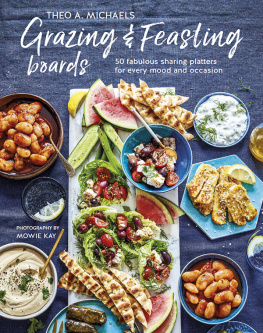
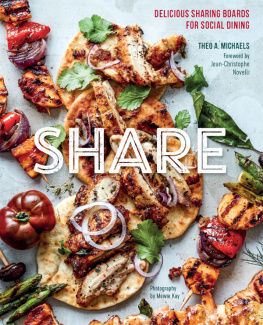

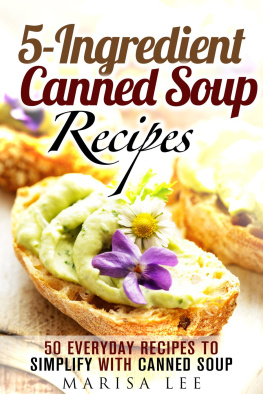
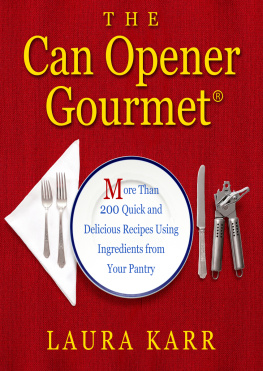
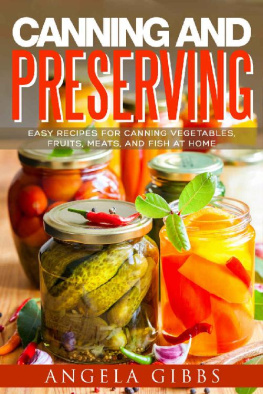

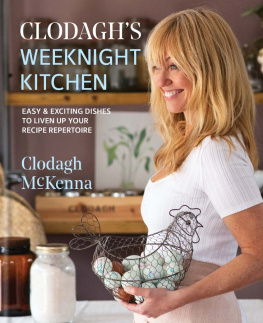
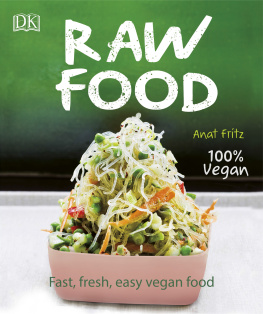

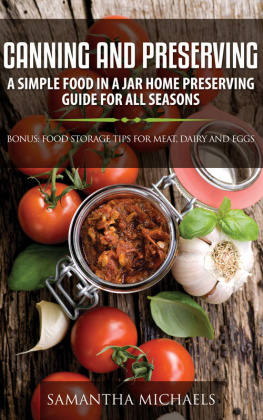
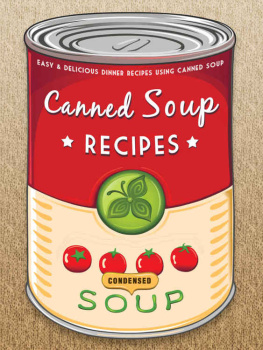
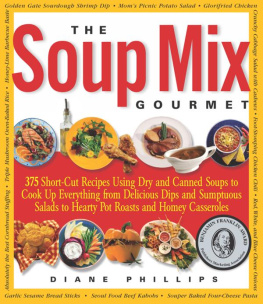


 CANNED Quick and easy recipes that get the most out of tinned food THEO A. MICHAELS PHOTOGRAPHY BY MOWIE KAY
CANNED Quick and easy recipes that get the most out of tinned food THEO A. MICHAELS PHOTOGRAPHY BY MOWIE KAY  Dedicated to my beautiful wife Anna and our kids, Eva, Lex and Luca x ART DIRECTOR Leslie Harrington EDITORIAL DIRECTOR Julia Charles SENIOR EDITOR Gillian Haslam PRODUCTION MANAGER Gordana Simakovic PUBLISHER Cindy Richards FOOD STYLIST Kathy Kordalis PROP STYLIST Polly Webb-Wilson INDEXER Hilary Bird Published in 2021 by Ryland Peters & Small 2021 Jockeys Fields London WC1R 4BW and 341 E 116th St New York NY 10029 www.rylandpeters.com Text Theo A. Michaels 2021 Design and photographs Ryland Peters & Small 2021 ISBN: 978-1-78879-362-9 10 9 8 7 6 5 4 3 2 1 The authors moral rights have been asserted. All rights reserved. No part of this publication may be reproduced, stored in a retrieval system, or transmitted in any form or by any means, electronic, mechanical, photocopying or otherwise, without the prior permission of the publisher. Printed and bound in China.
Dedicated to my beautiful wife Anna and our kids, Eva, Lex and Luca x ART DIRECTOR Leslie Harrington EDITORIAL DIRECTOR Julia Charles SENIOR EDITOR Gillian Haslam PRODUCTION MANAGER Gordana Simakovic PUBLISHER Cindy Richards FOOD STYLIST Kathy Kordalis PROP STYLIST Polly Webb-Wilson INDEXER Hilary Bird Published in 2021 by Ryland Peters & Small 2021 Jockeys Fields London WC1R 4BW and 341 E 116th St New York NY 10029 www.rylandpeters.com Text Theo A. Michaels 2021 Design and photographs Ryland Peters & Small 2021 ISBN: 978-1-78879-362-9 10 9 8 7 6 5 4 3 2 1 The authors moral rights have been asserted. All rights reserved. No part of this publication may be reproduced, stored in a retrieval system, or transmitted in any form or by any means, electronic, mechanical, photocopying or otherwise, without the prior permission of the publisher. Printed and bound in China. 
 CONTENTS
CONTENTS 
 INTRODUCTION The following pages feature a collection of over 65 deliciously clever (though I say so myself) recipes that make canned ingredients the star of the show. Developing recipes for any cookbook always involves plenty of trial and error long hours spent testing ingredients, experimenting with flavours and textures, and trying out new techniques (and on this occasion, wearing out several can openers!). Finding my perfect cast of cans to work with for these recipes took a fair amount of auditioning.
INTRODUCTION The following pages feature a collection of over 65 deliciously clever (though I say so myself) recipes that make canned ingredients the star of the show. Developing recipes for any cookbook always involves plenty of trial and error long hours spent testing ingredients, experimenting with flavours and textures, and trying out new techniques (and on this occasion, wearing out several can openers!). Finding my perfect cast of cans to work with for these recipes took a fair amount of auditioning.